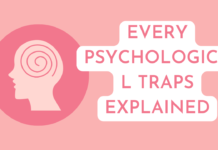| S. No. | Marketing | S. No. | Sales |
| 1 | Marketing starts with the buyer and focuses constantly on buyer’s needs. | 1 | Selling starts with the seller and is preoccupied all the time with the seller’s needs. |
| 2 | Seeks to convert “customer needs” into ‘products’. | 2 | Seeks to convert ‘products’ into “Cash”. |
| 3 | Views business as a customer satisfying process. | 3 | Views business as a goods producing process. |
| 4 | Marketing effort leads to the products that the customers actually want to buy in their own interest. | 4 | The company makes the product first and then figures out how to sell it and make a profit. |
| 5 | Marketing communication is looked upon as a tool for communicating the benefits/ satisfactions provided by the product | 5 | Seller’s motives dominate marketing communication (promotions). |
| 6 | Consumers determine the price; price determines costs. | 6 | Cost determines the price. |
| 7 | Marketing views the customer as the very purpose of the business. It sees the business from the point of view of the customer. Customer consciousness permeates the entire organization – all departments, all the people and all the time. | 7 | Selling views the customer as the last link in the business. |
| 8 | ‘Customer satisfaction’ is the primary motive. | 8 | ‘Sales’ is the primary motive. |
| 9 | External market orientation. | 9 | Internal company orientation. |
| 10 | Marketing concept takes an outside in perspective | 10 | Selling concept takes an inside-outperspective. |
| 11 | It is a broad composite and worldwide concept, more so in this era of globalisation. | 11 | It is a narrow concept related to product, seller and sales activity. |
| 12 | Marketing is more ‘pull’ than ‘push’. | 12 | Selling involves ‘push’ strategy. |
| 13 | Marketing begins much before the production of goods and services, i.e. with identification of customers’ needs. It continues even after the sale to ensure customer satisfaction through after sales services. | 13 | Selling comes after production and ends with the delivery of the product and collection of payment. |
| 14 | Marketing has a wider connotation and includes many activities like marketing research, product planning & development, pricing, promotion, distribution, selling etc. | 14 | Selling is a part of marketing. |
| 15 | It concerns itself primarily and truly with the ‘value satisfactions’ that should flow to the customer from the exchange. | 15 | It over emphasizes “the exchange’ aspect, without caring for the ‘value satisfactions’ inherent in the exchange. |
| 16 | It assumes: “Let the seller beware”. | 16 | It assumes: “Let the buyer beware”. |
| 17 | Marketing generally has a matrix type of organizational structure. | 17 | It has a functional structure. |
| 18 | The main job is to find the right products for your customers. | 18 | The main job is to find the customers for your products. |
| 19 | The mindset is “What is that we can make here or source from outside to satisfy the needs of the target customers”. | 19 | The mindset is “Hook the customer”. |
| 20 | Conceptual and analytical skills are required. | 20 | Selling and conversational skills are required. |
- Home
- Education
- Laws
- 1st Semester
- Constitutional Law of India – 1
- Contract
- Jurisprudence
- Law of Crimes
- Law of Torts
- 2nd Semester
- Constitutional Law of India – 2
- Contract 2
- Family Law (Hindu Law)
- Jurisprudence 2
- Law of Taxtion
- 3rd Semester
- 4th Semester
- Company Law
- Environmental Law
- Labour and Industrial Law
- 5th Semester
- Civil Procedure Code And Limitation Act
- Law of Crimes – II
- Case Laws
- Drafting
- THE CODE OF CRIMINAL PROCEDURE, 1973
- English
- UPSC CSE
Welcome!Log into your account









